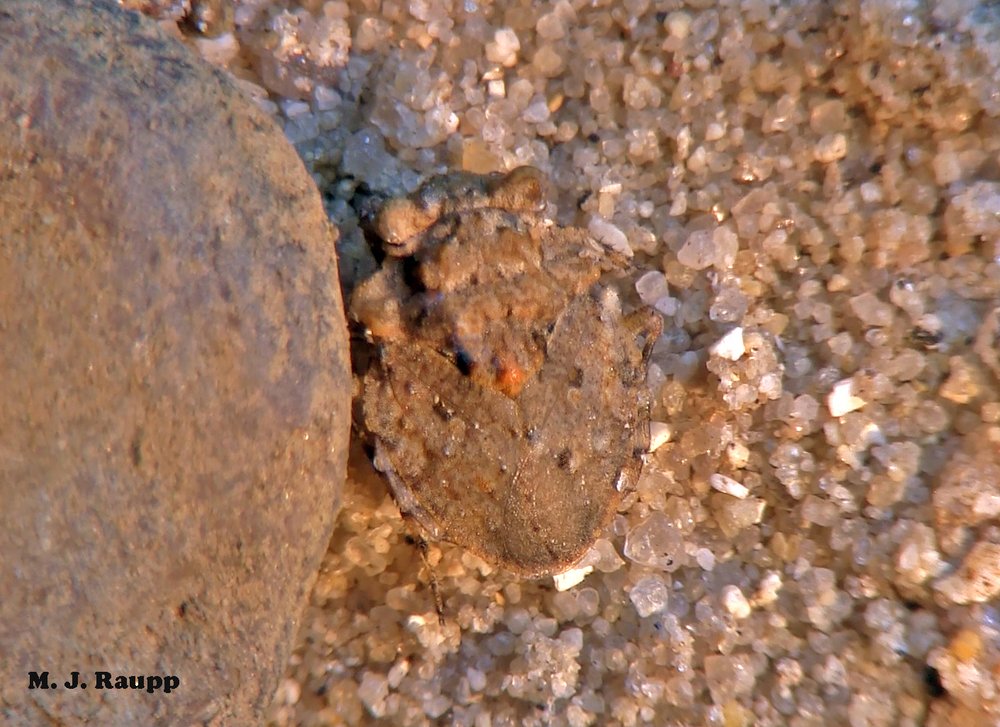
Toad bugs really do live up to their namesake in both appearance and hopping ability.
Many common names of insects tell us something about their appearance and traits. For example, lace bugs surely have delicate lacey wings and stink bugs certainly live up to their name with their odor. This week along the pebble strewn banks of Catoctin Creek, a bucolic tributary of the mighty Potomac River, we visited small jumpy toads and even smaller jumpy toad bugs. Toad bugs are somewhat obscure and often overlooked members of a large clan of insects known as Hemiptera. Here in North America we have more than 10,000 species of Hemiptera, but less than 10 species of toad bugs. We met many other hemipterans in previous episodes including heroic predators like wheel bugs and two-spotted stink bugs, and other hemipterans which are sometimes meals for these heroes like the felonious brown marmorated stink bug.
Like all predatory hemipterans, toad bugs have sucking mouthparts used to pierce the exoskeletons of their prey and a tiny pump in their head used to imbibe the liquid contents of their victims. Both immature stages called nymphs and adults cruise over the mud and sand and sneak about pebbles and vegetation lining the creek bank in search of small insects and other arthropods to eat. They hunt like cats - stalking prey, pouncing on them, and subduing them with highly specialized front legs. These raptorial legs are designed with spines to help snare their prey, much like the spines on the forelegs of praying mantises.
A warm late summer afternoon is a hopping good time to visit wildlife on the rocky banks of creeks and rivers. In addition to small jumpy toads, much smaller predators called toad bugs hunt tiny invertebrates along the pebble strewn shore. Watch as a toad bug lives up to its name and makes a jet-propelled escape from the camera lens. Even when slowed by 95% the takeoff is too fast to see. A super-close look confirms their toad-like appearance.
Their unusual body shape and muddy, mottled coloration help them blend in well with the creek bank, thereby avoiding the searching eyes of their own predators. When the subterfuge of camouflage fails, they skitter across the mud and make impressively long jumps to avoid capture by their enemies or bug geeks. At less than a centimeter in length they easily jump more than ten times their body length, shattering Mike Powell’s world record which, by the way, is only about five times his body length. With lots of warm late summer days left before autumn’s chill, head to a creek and cool off. And while you’re wading on the shore, don’t be surprised to see some Fowler’s toads and their hemipteran lookalikes, toad bugs, hopping between the pebbles.
Acknowledgements
Bug of the Week thanks Ellie, Abby, and Cassidy for helping to spot and catch toads and toad bugs that were the inspiration for this episode. We thank the fine naturalists at Catoctin Creek Nature Center for providing a wonderful refuge for nature amidst a rapidly developing landscape. “An Introduction to the Study of Insects” by D. J. Borer, D. M. DeLong and C. A. Triplehorn was used as a reference for this episode.
No comments:
Post a Comment